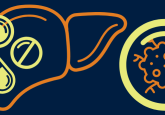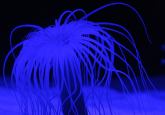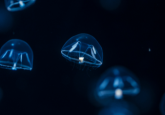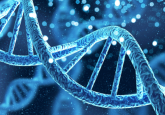Making sure it sticks: mass spectrometry to trace the mechanism of covalent molecular glues

New study reveals how mass spectrometry can be used to determine the mechanisms used by molecular glues to stick to their targets.
A collaborative effort between researchers from the Universities of Birmingham, Leicester (both UK) and the Eindhoven University of Technology (The Netherlands) has utilized native mass spectrometry (MS) to unravel the mysteries of molecular glue-stabilized protein complex formation. For their study, the researchers chose a molecular glue that had previously been biochemically and structurally characterized, known as MG1, for their investigation.
Molecular glues are a continually expanding area of medicinal chemistry that describe a group of small molecule drugs that influence the complexation of proteins, causing two or more proteins to group together. This, in turn, influences interactions between the proteins in complex. Molecular glues have allowed researchers to target proteins formerly thought to be undruggable. Further, the intersection between covalent drug design and molecular glues has garnered interest in covalent molecular glues, electrophilic molecules that target nucleophilic amino acid residues, forming a strong but reversible bond between the glue and the protein.
The effects of these interactions are well understood. Protein–protein interactions (PPIs) can have many biological effects, from triggering protein degradation to restoring the function of a dysregulated system. However, the underlying mechanism of how molecular glues stabilize the complexing of proteins remains elusive. The stabilization process is a series of both covalent and non-covalent binding interactions between the proteins and the molecular glue. Biochemical assays can confirm the presence of complex formation; however, they report on a global level and can not elucidate the minutiae of reactions facilitating this formation.
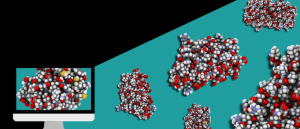 Computer models nanoparticle–protein interactions
Computer models nanoparticle–protein interactions
Researchers at the University of Michigan have trained a deep learning model to predict molecular interactions, which could revolutionize drug discovery and design processes.
In an alternative approach to the study of molecular glues, the researchers first used a fluorescence anisotropy assay to investigate the reaction kinetics of the stabilization process. By titrating one target protein against the other in the presence of MG1, the team was able to determine that there is an initial, rapid phase followed by a slower second phase. Next, MS was applied to correlate the stabilization attributed to MG1. Spectroscopic analysis was undertaken on the two proteins alone, one protein in the presence of MG1 and both proteins in the presence of MG1. The results demonstrated that MG1 binds poorly in the absence of both proteins, implying that it has a greater affinity for a preformed complex.
This data allowed the team to conclude that MG1 binds preferentially to a preformed but non-stabilized complex of its target proteins. It initially binds non-covalently in the fast first kinetic phase but the rate-limiting step is the slow, covalent binding phase. Moreover, the team has demonstrated the utility of MS in determining the molecular glues’ mechanism of stabilization and provided an experimental framework for future investigation.
“Understanding how molecular glues stick proteins together enables scientist to better design and build the next generation of molecular glue drugs,” said Peter Crossar co-author (Eindhoven University of Technology), speaking on the significance of the study. “MS provides a tool to do so, by providing high fidelity information on how these unique molecules behave in real time.”
